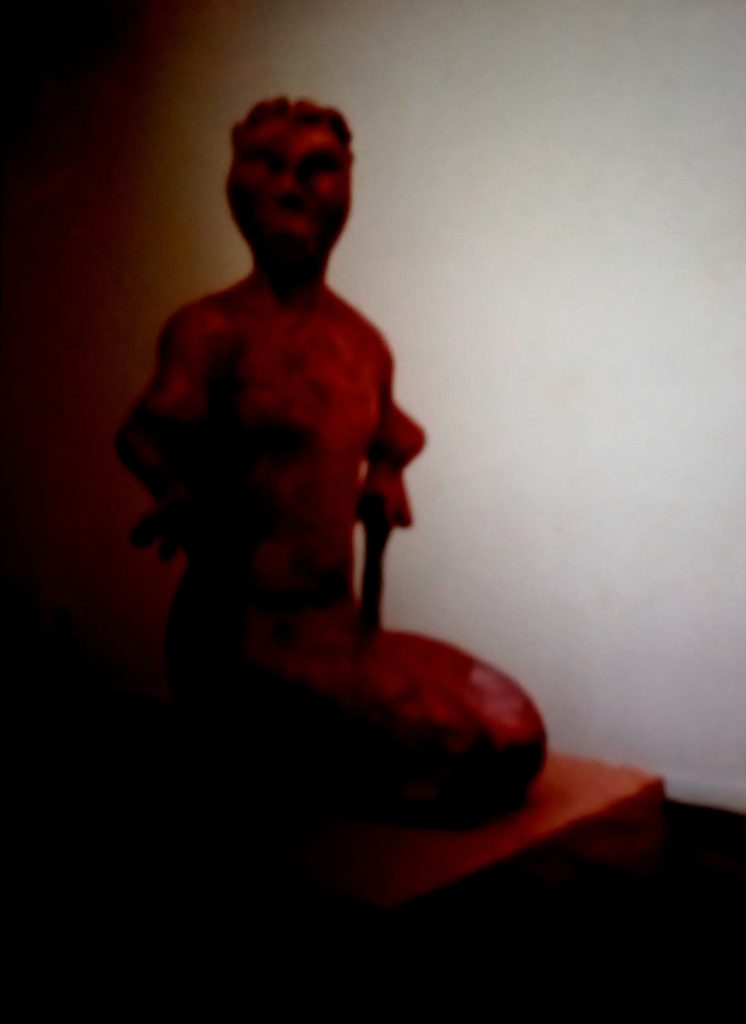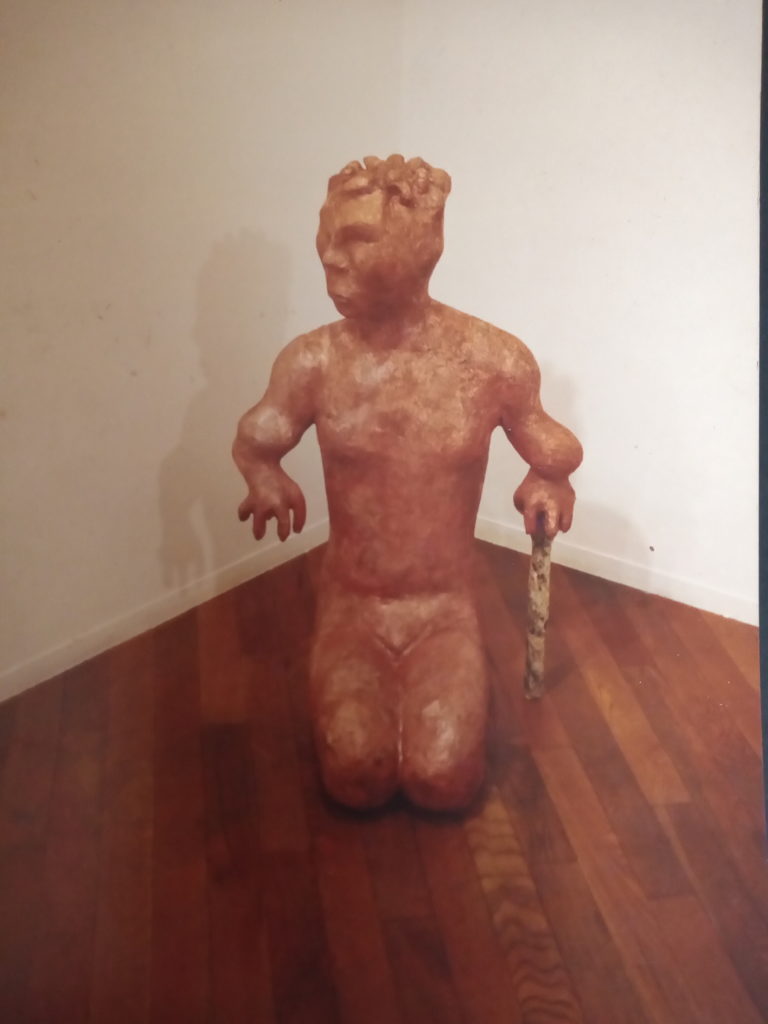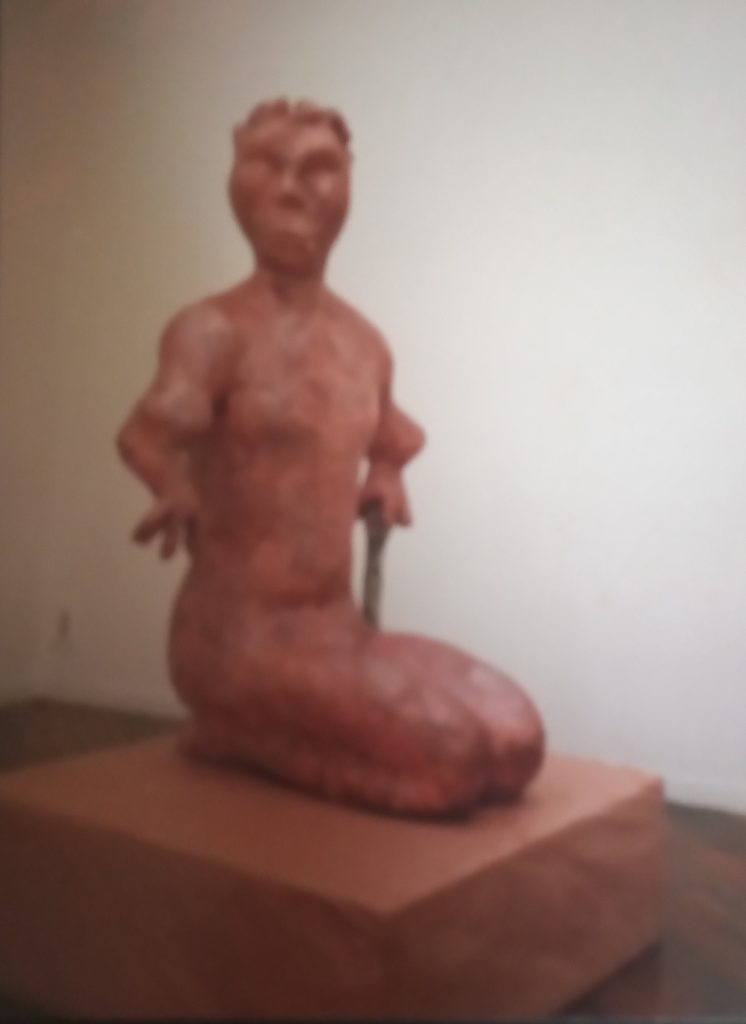Social Distancing or Physical Distancing? / Archana Hebbar Colquhoun
a sculptural representation

Covid-19 and Social Distancing
The current global coronavirus pandemic leading to COVID-19 shows no signs of dying a natural death; far from it, we are nowhere near finding a solution to arresting the spread of the virus. The virus appeared mysteriously and suddenly, infected some, multiplied rapidly, hitch-hiked by various means and entered all parts of the world – sparing no region. It underwent numerous mutations during its journey around Planet Earth and half a year later still stays firmly away from the grasp of human comprehension.
This uncontrolled, worldwide pandemic has completely transformed our lives and we have come up with one rather simple behavioral method and the only known effective one so far to cope with this situation. The world’s lingua franca has given it the name “Social Distancing.” The English language is highly adaptive. But the language is also very adept at coining specious terms. These terms are then taken up unquestioningly by anyone speaking any language, anywhere in the world.
I would like to discuss, using one of my sculptural works, the connotative meanings of the term “Social Distancing.” As a more suitable term to use in the COVID-19 context, I would suggest the term “Physical Distancing.
A Sculptural representation
The subject of this article is a sculpture of a seated man. It is the third in the series of five sculptures that I made in Tokyo, in the late 80s. These sculptures are based on specific people I saw on the streets of “Calcutta,” in the early to mid-80s. I did not and could not strike up a conversation with any of them. Perhaps I did not have the strength of spirit to connect with them through verbal communication. I had my own problems and I felt just as helpless as they did or perhaps they did not even feel the same sort of disempowerment I felt. They were, for all I know, stronger in spirit than most and had the mental strength to accept their condition and live a functional life with a reasonable level of happiness and fulfillment.
The reason for the absence of an interaction with any of the individuals I saw and passed by on the streets of Calcutta that year in the early to mid-80s was revealed to me gradually, over the years. This happened through certain specific experiences I had with people, belonging to different groups, in various countries. These experiences were, what I would call, mundane and of little import when taken from the point of view of a day to day existence. To me, however, they were eye openers. These experiences signified to me the true meaning of the currently much bandied about term “Social Distancing.”
I posted a write-up about my second sculpture in the series, crawling man, titled “The World on its Hands and Knees,” since the person the sculpture was modeled on represented to me the condition that all of us are in now – our lives ruthlessly controlled by a global pandemic caused by a bio-chemical entity, the coronavirus, that exists in that nebulous state between living and nonliving.
The fear of COVID-19 is real, palpable, and terrifying because we have no understanding of the workings of the coronavirus. A term with a very specific meaning has been coined to describe the physical distance each of us needs to maintain with everyone except for the few people with whom we share a living space, excluding even your blood relatives if they happen to live in separate accommodation.
This physical distancing is termed “Social Distancing.”
Social Distancing vs Physical Distancing
“Social Distancing” is entirely erroneous as a term to describe the sort of distancing we need to maintain between each other during this pandemic. The ‘distancing’ is necessary so as to not catch the virus from people with whom interaction is unavoidable, termed essential workers, and spreading the virus to other individuals.
Social Distancing as a practice is nothing new; it has always existed in all societies, in one form or another. It is implemented and controlled by a small minority of agents of power, be they the ruling elite, the strong amongst the weak etc. Using the term “Social Distancing” in the present situation to describe a prescriptive behavioral form of maintaining physical distance to avoid spreading of COVID-19 that applies to all, irrespective of their social standing, performs the task of validating, insidiously, the deep social divide, wide-spread all over the world. The term gives credence to the institutionally managed segregation of communities that disempowers large groups of people based on their color, ethnicity, economic standing, gender, etc., and people with physical disabilities. These groups of people live a socially distanced life. I have not included other groups or even people with disabilities that are not to do with the visible physical body, in this discussion.
Persons with physical disabilities
Among the many disempowered groups of people, such as those listed above and others, it is the group of people with physical disabilities that are uniquely placed as the ones whose lives are more severely affected by social isolation and the resulting social distancing. A person with physical disabilities is a single individual, often experiencing a sense of separation even within their own family. Although living a socially distanced life like many other groups of people, a person with a physical disability is alone in their disability as each form of disability is different from another. The extent and nature of the disability depends on individual factors and the person with a disability does not belong to a clearly identifiable collective.
Examples of a ‘collective’ would be an ethno-racial social group or a community of economically deprived families, living in ghettoized, marginalized conditions. Accordingly, a person with disabilities lacks the emotional support system that individuals belonging to other disempowered groups with shared problems and a common identity have.
The social and emotional isolation of people with a physical disability may be the result of congenital factors, of deliberate acts of cruelty, accidents, and even more shockingly and tragically due to poorly understood medical treatments. These treatments are administered hastily, not having been properly verified but widely hailed as effective, and any side-effects resulting from the treatment, which may be severe and irreversible are identified only when the damage is already done.
As mentioned earlier, physical disabilities can include a whole range of conditions, including ones that are not readily visible to others or those that entirely escape the notice of people who are strangers to the person with a disability.
A physical disability of a particular kind and why it became the subject of my sculptures
The form of physical disability I chose to highlight through the set of five sculptures belong to the one category of people (four of the sculptures referring to actual individuals I saw), who are either born with or developed later in life anomalies (in medical terms a “deformity”) in their bodily structure. Their limbs, extremities, and craniofacial features affect how they are viewed by others and the bodily movement and functionalities of the people in this category are restricted to various degrees. Often, the stark visual nature of their physical characteristics, entirely unique to each individual and the disabilities being specifically their own, marks them apart from others. They are denied a sense of belonging to a community. Inarguably, the social and emotional isolation that the people in this group experience compounds their day to day difficulties and increases their dependency on others. The subject was compelling and I was and still am deeply affected by the life situation of people with disabilities who have readily visible “malformations” of the body.
Before I talk about my sculpture, seated man, and the form and content of the work, I would like to make clear my rationale and impetus behind selecting, as subjects of my artwork, people with physical characteristics that restrict their mobility and whose body structure does not conform to expected norms. If the motivation for doing the set of sculptures is not already evident from the foregoing discussion, I would like to stress that by doing these works I want to bring to light the pain and suffering of these individuals, which is singularly their own.
These set of sculptures may be deemed voyeuristic, distasteful, and even lacking in basic human sensitivity and compassion on the part of the artist. This is one reading of the work, and from the point of view of the artist, that is me, the reading reflects the reader’s/viewer’s own point of view, which does not allow them to extend their understanding of what an art work stands for, the compelling motivations of the artist for doing works of this kind, and the complex web of meanings the artwork holds. These meanings of the artworks constantly change and come to light depending on the context in which they are presented and the nature of the audience. There may be no specific target audience in the mind of the artist when a work is created, unless the work is commissioned by a specific patron with clear-cut requirements. My set of works are entirely self-motivated and created with no specific audience in mind.
It is my conjecture that the seated man, who in all probability was homeless, had a congenital condition that caused the shortening of his arms but evidently with strong musculature in the upper and forearms, both structurally relocated and joined in such a way as to provide for an elbow function. The formation of the arms had a certain degree of symmetry, in that the arms had the same proportion and structurally related to the rest of the body in a similar manner.
The Sculpture of a seated man

A seated man, homeless perhaps, his posture is almost that of a yogi. His torso is upright and handsome. He sits with his legs folded under in the yoga pose of Vajrasana, holding a stick in one hand for support. His arms are strong, although shortened. They are connected securely to his shoulders in a “standard” anatomical position. His head is turned sideways to view something that he caught sight of from the corner of his eyes. He used his very own form of transport, a little trolley, which I edited out from the sculpture. This I did so as to give prominence to the figure of the man who bore himself with dignity to the extent he could, given his circumstances. The trolley would have been a distraction and would have drawn attention to his disability.
Whatever innate dignity his physical demeanor may have presented, he was still an outcast – homeless, living on the streets, and displaying those physical features that the vast majority of people could not relate to and from whom they maintained a clear social distance.
The social distancing of people such as the seated man has no relation to the “Social Distancing” prescribed by the governments of all countries for tackling COVID-19. What is needed in the present circumstances is “Physical Distancing.”
If the indignity of a subtle form of social distancing was not enough, the seated man spending most of his time on the pavement had people walking past him, occasionally tossing a few coins in his bowl, who practiced a more blatant form of “physical distancing;” whereby, when they passed him on the street, they kept a distance that was more than necessary. This they did to make certain that they avoided contact with him. They walked past him by making a wide arc of a semi-circular curve using a quick motion to go past him, in the shortest possible time.
Practicing social distancing in relation to people isolated from the mainstream of society existed way before COVID-19 gripped our lives.
Displaying the work in an art gallery

In order to express the combined qualities of dignity and social isolation of the seated man, the figure was placed directly on the floor of the gallery on the first day of the show, and from the second day of the show until the closing of the show the figure was placed on a pedestal, which not only isolated him but also provided him with an elevating platform, giving him the dignity he deserves.